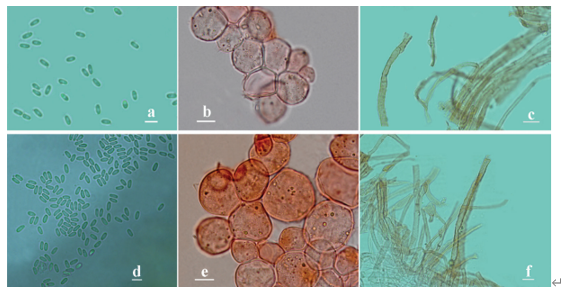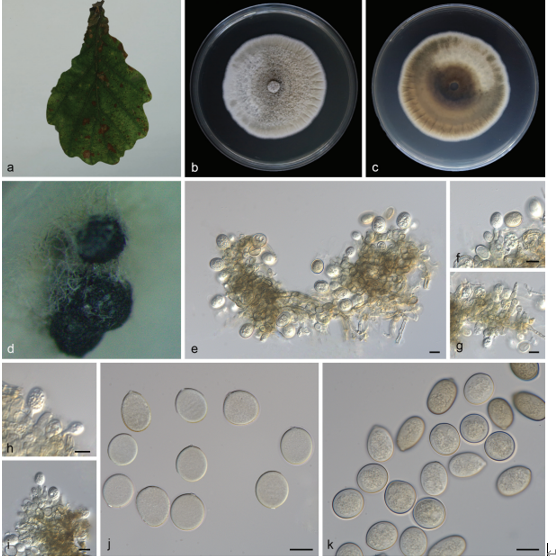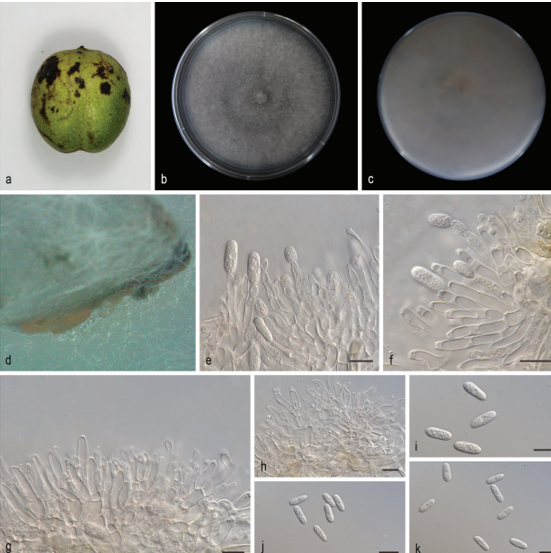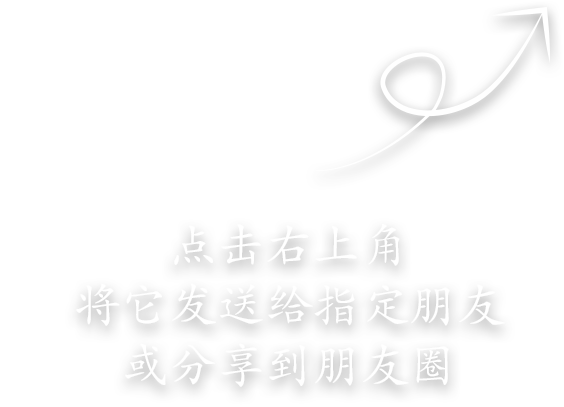Acrogenospora submersa D.F. Bao, Z.L. Luo, K.D. Hyde & H.Y. Su, sp. nov. 2020
Index Fungorum number: IF 557601; Facesoffungi number: FoF 07986
Holotype: CHINA, Yunnan Province, saprobic on decaying wood submerged in Lancang River, 9 December 2017,Z.L. Luo, S-1601 (MFLU 20–0294, holotype), ex-type culture, MFLUCC 18–1324.
Morphological description
Saprobic on submerged decaying wood. Sexual morph: Undetermined. Asexual morph: Colonies effuse on natural substrate, hairy, dark brown. Mycelium partly immersed, partly superficial, composed of septate, brown to dark brown, branched, smooth hyphae. Conidiophores 163–223 × 6.5–10 µm (x¯ = 193 × 8.4 µm, n = 15), mononematous, macronematous, solitary, erect, straight or slightly flexuous, cylindrical, unbranched, brown to dark brown, paler toward apex, septate, smooth. Conidiogenous cells holoblastic, monoblastic, integrated, initially terminal, later becoming intercalary, cylindrical, smooth, pale brown, proliferating percurrently. Conidia 28–32.5 × 25–28 µm (x¯ = 30.3 × 26.5 µm, n = 30), acropleurogenous, solitary, spherical or subspherical, base truncate, aseptate, hyaline when young, pale orange-brown to olivaceous brown when mature, smooth.
Habitat: on decaying wood submerged in Lancang River.
Distribution: Yunnan Province, china.
GenBank Accession: LSU MT340735; SSU MT340746; RPB2 MT367162; TEF-1α MT367154
Notes: Acrogenospora submersa is similar to A. hainanensis in having mononematous, macronematous, solitary, proliferating percurrently conidiophores, monoblastic, integrated, terminal conidiogenous cells and spherical or subspherical, aseptate conidia. However, A. submersa differs from A. hainanensis by having longer conidiophores (163–223 × 6.7–10 µm vs. 60– 80 × 2–3.5 µm), and much larger conidia (28–32.5 × 25–28 µm vs. 7.5–9.5 × 7–8.5 µm), which are hyaline to pale orangebrown or olivaceous brown rather than brown. Phylogenetically, A. submersa is related to A. guttulatispora but in a distinct lineage. Therefore, we introduce it as a new species.
Reference: Dan-Feng Ba1,2,3, Eric H. C. McKenzie4, D. Jayarama Bhat5 et al.
Acrogenospora submersa. (MFLU 20–0294, holotype) (a) Colonies on wood. (b-g) Conidiophores with conidia. (h,i) Conidiogenous cells with conidia. (j,k) conidia. (i) Germinating conidium. (m,n) Culture on MEA (upper and lower view). Scale bars. (a)200µm. (b-g)50µm. (h-l)20









